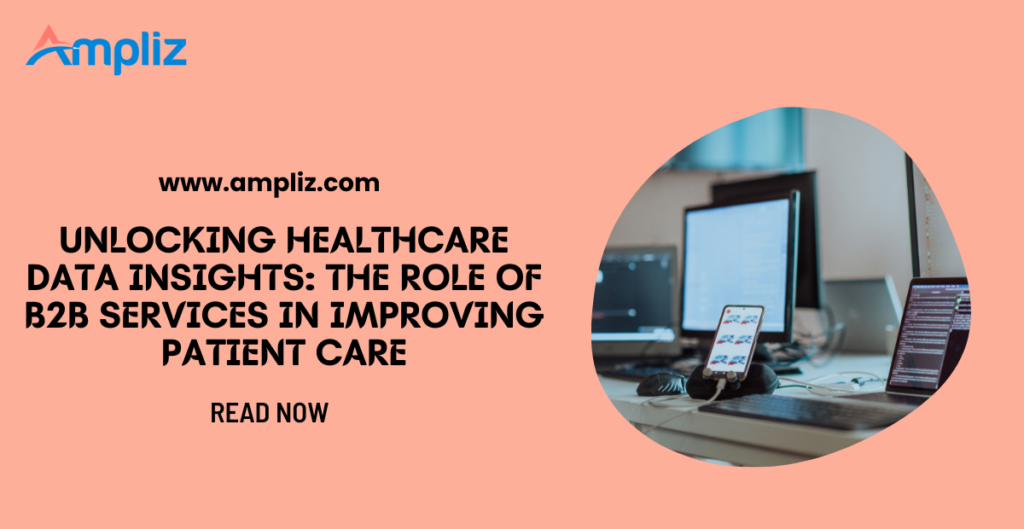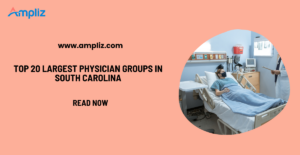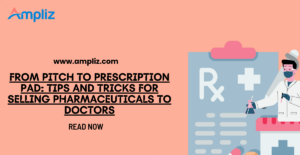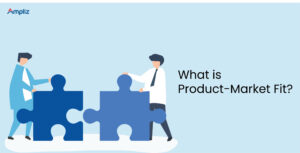Marketing experts generally talk about collecting and processing business-to-business data as a way to track organisational purchasing patterns over time. Healthcare industry representatives are starting to see the advantages of working with B2B information for reasons only tangentially related to the marketing field. Surprisingly, the kind of focused marketing techniques that have come about as a result of these workflows have also brought a number of benefits for patients as well.
Noncommercial applications of B2B technology are already being used across the medical sector, and it’s likely that they’ll grow exponentially alongside other more pecuniary uses. Data sets continue to grow on a daily basis, which means users will soon have more information to draw from. Nowhere is this more important than in the diagnostic segment of the healthcare market, especially in the field of imaging.
The Role of B2B Data in Medical Imaging
Academics in the computer science field have long proposed the use of artificial intelligence subroutines as a diagnostic aid for radiologists and other medical imaging experts. Few projects were ever able to get beyond the planning stage before recently because of a lack of standard training data. Patient privacy and confidentiality guidelines often limited the use of information taken from hospital examining rooms.
Existing B2B data sets are regularly sanitized in order to comply with all relevant regulations in the jurisdictions that healthcare businesses operate, which make them far more useful than most older examples. At the same time, quality assurance problems could hold back this kind of software as well. Oncologists have reported unusual situations where a machine learning network is accidentally trained to look for the presence of document fasteners on radiograph prints instead of actual malignant tissue.
Due to the sheer volume of data collected while dealing with B2B promotional campaigns, it shouldn’t be difficult to train better models than the ones that currently exist. Use of such technology during the image capture process can help to reduce the amount of time that patients have to undergo a particular scan. Technologists predict that this kind of software may become more accurate as the databases they draw on continue to grow.
Radiologists could eventually decrease the amount of ionizing radiation that patients would have to endure since they wouldn’t need to capture as deep an image to draw the same diagnostic conclusions. Medical imaging is tied to a number of negative side effects, and overuse is linked to an increased risk of leukemia. Any technological advance that cuts down on radiation doses should be well-received by the medical community at large.
Pattern recognition programs also work more efficiently when it has a larger amount of data on which to perform algorithmic operations. By feeding new information to these applications, they could potentially spot previously unknown risk factors for poorly understood disorders. Collegiate research institutions will likely be the biggest beneficiaries of these advances.
Making Databases Useful to the Public Sector
Sharing information is an excellent way for researchers to test their own findings, but medical data presents a number of challenges that can complicate matters. Private organizations that want to help aid research projects by sharing information can expose select pieces of data over an application programming interface. Doing so can ensure that scientists and medical experts have access to important findings without risking them being able to trace the data back to any one single patient. Modern cloud security infrastructure makes it possible to deploy a comparatively private healthcare data management environment.
Representatives from healthcare organizations can access small trickles of sanitized data from this sort of ecosystem and derive insights in ways that wouldn’t have otherwise been possible. Visualization software can help them get an at-a-glance view of patient demographics and find out what groups might be most likely to develop certain conditions. Once they’ve been able to produce large enough graphs to see an overview of all those treated for particular maladies in a given year, they can make informed decisions regarding staffing.
Understaffed and underfunded areas show up as major red flags on any infographic produced using these workflows, which makes it likely that governmental authorities will be among those most likely to benefit from them. Productivity experts who are working to improve the operational efficiency of clinical practitioners will be free to conduct studies at a faster pace than ever before. There’s also a strong chance that it can be of great help to those who are tasked with ensuring that all facilities have a complete inventory of medical supplies to deal with any unscheduled patient requests.
Dealing with Supply Chain Challenges
Seeing as supply chain-related topics have been something of a hot button issue in recent years, it stands to reason that anything that solves them would lead to better service in whatever industry deploys it. In the case of healthcare, that can translate into better patient outcomes. By using healthcare data sets to predict when a clinic or ambulatory might need to increase their inventory, these facilities can reduce the risk of getting caught without the tools they need to treat those in need.
Unlike most other industries, a majority of B2B campaigns geared toward healthcare workers are focused on selling to large numbers of individual businesses. Though some medical supply companies certainly fill orders from chains of hospitals operated across a wide geographical area, most firms will find that the bulk of their sales come from contracts made with independent offices. Medical practitioners who enter private practice usually aren’t tied with others in the field except through insurance networks, so they have to be reached on a one-on-one basis.
This can make it more difficult to anticipate future situations, but prognosticators who use data collected from B2B campaigns stand a better chance of figuring out when individual providers may need something shipped to them. Others may instead want to focus instead on eliminating systemic resource waste in order to improve patient outcomes in a less direct fashion.
Proficient Utilization of Healthcare Resources
One of the original reasons that data scientists decided to conduct analytical studies was to identify areas where they could boost the operational efficiency of the organizations that employed them. Problematic areas are easy to spot when they’re presented in a concise fashion. Specialists have used AI-driven solutions to check over schedules and see if there are any patient intake patterns that could do with measurable changes. Urban hospitals may have to admit large numbers of patients at given times as a result of traffic accidents and related maladies. By spotting times where this occurs more often than others, emergency room managers will find times when they may need extra crews.
Managing monetary statistics is of prime importance for organizations that receive taxpayer funds, and this may be of even more interest to hospital managers who find themselves dealing with tight budgets. Regulators want to be certain that public money gets allocated in an appropriate manner. As a result, they tend to deny funding requests if they’ve found any examples of past accounting irregularities. Supervisors can use a combination of data collected from B2B campaigns, their own internal records and information collected from an independent bookkeeping business to provide a transparent trail. Accurate financial records support data-driven decision-making processes by supervisors as well as individual healthcare providers.
Due to the possibility of abuse, many institutions watch opioid pain relievers even more closely than they do their accounts. Analyzing data collected from B2B sales transactions could help auditors spot any misuse of potentially dangerous drugs. Marketers have also been able to use the new sales channels opened by B2B systems as a way to offer newer remedies to patients. Bioinformatics experts are taking this to its logical conclusion by using data collected as part of these transactions to aid in the development of new modalities.
Identifying Demographic Risk Factors
Statistics related to the development of any given disorder are usually calculated based on long-form records collected from public sector authorities. While these are generally accurate, they can lag behind the curve since it takes so long for these agencies to build their databases. Sales software employed by B2B sales representatives produces information at a staggering rate, which enables demographers to spot trends in almost real time.
By calling an external API from inside of a script, tech-savvy social scientists can get instant access to details regarding the vitals of patients who have developed certain disorders. Patients who would have been considered mere outliers in previous studies may therefore show markers they share with other individuals. Caregivers who look over these studies can often figure out what scenarios make it possible for an otherwise healthy person to develop some condition and respond accordingly.
At least one startup company has used similar studies as part of the drug discovery process. Any API pressed into service like this will automatically sanitize any data it exposes, thus making it suitable for use in such studies. In spite of years of medical research, there are still countless disorders for which no cause is known. Massive database models may hold the key to unlocking these heretofore misunderstood conditions.
Accurate and comprehensive data collection policies are also useful for doctors who have to diagnose patients they meet face-to-face or through a telemedicine app.
Informing the Clinical Decision-Making Process
Doctors normally diagnose patients based on previous experience and evidence collected from other experts in the field. Patients who don’t have easily recognizable signs may be nearly impossible to classify. Some preliminary research has been done with prompting large language models to provide diagnostic information.
Though this practice has shown some promise, it’s also hazardous because of the possibility that AI tools can confidently reply with complete nonsense. Medical doctors need a reliable source of diagnostic advice that they can rely on in additional to traditional pharmaceutical guidebooks. Data passed through an API that showcases previous diagnostic outcomes can help to predict what might happen if a doctor followed a certain treatment path.
One review of scientific literature found that supervised machine learning subrountines could aid experienced vascular neurologists in diagnosing and treating stroke patients. By customizing therapeutic modalities to each patient, recovery times could be slashed by a considerable amount. The odds of misdiagnosing a patient are also much lower when working with these agents, since they provide warning signs that act as red flags when picking out a course of treatment.
Inspired by this trend, some marketers have sought to use more humble applications of B2B data processing technology so they can get remedies out to more people.
Improving Sales Channels to Benefit Patients
Contrary to popular belief, advertising really does have a purpose beyond just increasing sales. Without advertising, consumers wouldn’t know what sorts of products and services were available to them. The same is true of the healthcare sector, though the heavy promotion of prescription drugs through certain sales channels have made this a controversial issue.
Providers of low-cost generic drugs as well as wholesalers have found that B2B sales technology enables them to target pharmacies and clinics that serve patients. Unlike contentious efforts focused on reaching patients, these are only ever geared toward other professionals. Patients actually benefit from this kind of practice, since their providers will be more educated about new treatment options as well as low-cost alternatives that may be covered by public insurance plans.
The burden of social proof in the healthcare industry tends to fall squarely on the shoulders of professionals, which means it makes sense to advertise directly to them instead of reaching out to patients who may have only the most cursory understanding of what they’re going through. Assuming that this program lasts for the foreseeable future, it’s likely that patients will enjoy safer modalities as well.
Reporting Protocols for Adverse Effects
Drug interaction reports have been filed electronically for far longer than most members of the general public have used the Internet, but there’s still plenty of room for improvement. Doctors and pharmacists can leverage existing B2B healthcare networks to share information about what sorts of difficulties they’ve run into when prescribing certain combinations of drugs. Whenever someone wants to write a prescription, they can consult this database and see if there’s anything wrong with what they’re writing out.
Regulatory commissions already have sophisticated systems in place to deal with these problems, but there is always room for more oversight as it becomes more common to prescribe multiple agents alongside one another. Using technical infrastructure developed by outside organizations may also lead to a proliferation of independent sources of information. Conventional services aren’t always immediately available either, which makes having a second opinion as useful in this field as it would be in any other aspect of the medical profession.
More than likely, the most innovative uses of B2B technology in the healthcare sector haven’t even been thought of yet. With the sheer number of vendors adopting it, however, they’re sure to be right around the corner.




